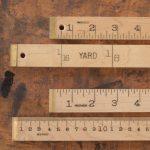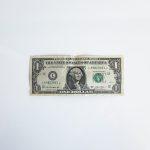Screw Size Chart & Thread Count: How to know the size of a screw
The screw size is determined by two factors: its diameter and its length. The diameter of a screw refers to the width of the screw shank, which is the threaded cylindrical portion.
This diameter is commonly expressed in millimeters or inches. On the other hand, the length of a screw is measured from under the head to the tip of the screw.
This measurement is also commonly expressed in millimeters or inches. A screw’s thread count and its diameter and length are important in determining its size. The thread count refers to the number of threads or ridges per inch or millimeter along the screw shank.

Screw size is determined by a combination of diameter, length, and thread count, resulting in a secure and tight fit for each project. Understanding these key factors is critical in determining the correct screw size for your specific requirements.
Source: Wikipedia
Jump immediately to the FAQ section
Table of content
- Screw Size Chart and Thread Count Guide
- Screw Thread Count
- The Different Types of Screws and their sizes
- Understanding Screw Sizes
- How to measure screw size?
- Faq
Related: Cornhole Board Size and dimensions guide (for DIY), Light Bulb Base Sizes : What size light bulb base do I need?, Drill Bit Size Chart and Different Types in metric, gauge size and more… , Light bulb Size : What are the different and standard bulb sizes?
Screw Size Chart and Thread Count Guide
| Screw Size | Fractions | Millimeter and Inches |
| #1 | 1/16” | 1.58750 mm 0.0625 inches |
| #2 | 5/64” | 1.98437 mm 0.07812 inches |
| #3 | 3/32” | 2.38125 mm 0.09375 inches |
| #4 | 7/64” | 2.77812 mm 0.10937 inches |
| #5 | 1/8” | 3.17500 mm 0.125 inches |
| #6 | 9/64” | 3.57187 mm 0.14062 inches |
| #8 | 5/32” | 3.96875 mm 0.15625 inches |
| #9 | 11/64” | 4.36562 mm 0.17187 inches |
| #10 | 3/16” | 4.76250 mm 0.1875 inches |
| #11 | 13/64” | 5.15937 mm 0.2031 inches |
| #12 | 7/32” | 5.55625 mm 0.21875 inches |
| #13 | 15/64” | 5.95312 mm 0.2344 inches |
| #14 | ¼” | 6.35000 mm 0.25 inches |
| #16 | 17/64” | 6.74687 mm 0.2656 inches |
| #18 | 19/64” | 7.54062 mm 0.29687 inches |
| #20 | 5/16” | 7.93750 mm 0.3125 inches |
| #24 | 3/8” | 9.52500 mm 0.375 inches |
Related: different Bolt sizes explained
Screw Thread Count
| UNC | UNF |
| ¼ x 20 | ¼ x 28 |
| 5/16 x 18 | 5/16 x 24 |
| 3/8 x 16 | 3/8 x 24 |
| 7/16 x 14 | 7/16 x 20 |
| 1/3 x 13 | 1/3 x 20 |
| 5/8 x 11 | 5/8 x 18 |
| ¾ x 10 | 3/8 x 16 |
| 7/8 x 9 | 7/8 x 14 |
| 1 x 8 | 1 x 14 |
What is the first thing that comes to mind when you hear the word fastener? It might be nails, bolts, nuts, washers, screws, or rivets.
All these are the different fastener categories. However, we will focus on screws. There are various types of screws available in the market.
The screws have different head types and head styles. Therefore, we present this comprehensive screw size chart and thread count guide. It has helpful information that will enable you to understand the difference and get the actual screw sizes.
The Different Types of Screws
The following are the four major types of screws available in the market.

1. Wood Screw sizing
The diameter of wood screws ranges from #0 to #24; the larger the number, the larger the size, and #0 is the smallest screw size.
Sizes ranging from #2 to #14 are widely available. The number size has no bearing on any measurement. Lengths range from 1/4″ to 6″; the longest typically found is 5″ or so, and larger screw sizes are available in the longer lengths.
Screws less than 1″ are measured in 1/8″ increments; screws 1″ to 3″ are measured in 1/4″ increments; and screws longer than 3″ are measured in 1/2″ increments.
Wood screws are measured the same way as other screws: “The length of a headed fastener is defined as the distance between the intersection of the largest diameter of the head and the bearing surface and the extreme.”
These are designed for connecting items such as metals to wooden bases. Generally, wood expands and shrinks depending on the surrounding temperature.
Therefore, you need a specialized screw that would be effective in a head wood screw drill. Wood screws have the capability of bending before snapping. Therefore, they are not used to drill holes in metals.
Wood Screw Dimensions, Sizes, Head Diameters & Threads per Inch
| Nominal Screw Size | Threads per Inch | Basic Diameter of Screw | Basic Diameter of Screw | Average Head Diameter | Average Head Diameter | Average Head Diameter | Average Head Diameter |
|---|---|---|---|---|---|---|---|
| Flat & Oval | Flat & Oval | Round | Round | ||||
| Decimal | Fraction | Decimal | Fraction | Decimal | Fraction | ||
| 0 | 32 | 0.060 | 1/16 | 0.109 | 7/64 | 0.106 | 7/64 |
| 1 | 28 | 0.073 | 5/64 | 0.135 | 9/64 | 0.130 | 1/8 |
| 2 | 26 | 0.086 | 3/32 | 0.160 | 5/32 | 0.154 | 5/32 |
| 3 | 24 | 0.099 | 3/32 | 0.185 | 3/16 | 0.178 | 11/64 |
| 4 | 22 | 0.112 | 7/64 | 0.210 | 13/64 | 0.202 | 13/64 |
| 5 | 20 | 0.125 | 1/8 | 0.236 | 15/64 | 0.227 | 7/32 |
| 6 | 18 | 0.138 | 9/64 | 0.262 | 17/64 | 0.250 | 1/4 |
| 7 | 16 | 0.151 | 5/32 | 0.287 | 9/32 | 0.275 | 9/32 |
| 8 | 15 | 0.164 | 5/32 | 0.312 | 5/16 | 0.298 | 19/64 |
| 9 | 14 | 0.177 | 11/64 | 0.337 | 11/32 | 0.323 | 21/64 |
| 10 | 13 | 0.190 | 3/16 | 0.363 | 23/64 | 0.347 | 11/32 |
| 12 | 11 | 0.216 | 7/32 | 0.414 | 13/32 | 0.395 | 25/64 |
| 14 | 10 | 0.242 | 15/64 | 0.480 | 31/64 | 0.443 | 7/16 |
| 16 | 9 | 0.268 | 17/64 | 0.515 | 33/64 | 0.491 | 31/64 |
| 18 | 8 | 0.294 | 19/64 | 0.602 | 19/32 | 0.539 | 17/32 |
| 20 | 8 | 0.320 | 5/16 | 0.616 | 39/64 | 0.587 | 19/32 |
| 24 | 7 | 0.372 | 3/8 | 0.724 | 23/32 | 0.683 | 11/16 |
2. Sheet Metal Screws
These screws are typically sturdier and stronger than wooden screws because they are made of steel. Steel is the most common material used for the manufacture of screws.
These screws are used for applications in various materials but not on metals because they strictly stay in place once screwed on. Note that tapped holes are required before a machine screw such as a hex head screw is inserted.
The sheet metal screws are self-tapping, meaning they do not need pre-drilled holes into the source before inserting them. They are best for application in heavy gauge sheet metal.
3. Phillips Head Screw
Its flat screw head cannot be used on sheet metal cross head screws. If you are always working with screws, get yourself at least one of these types of screwdrivers.
When using these screws, have a countersunk hole to ensure that the countersinking flat head screws are in place.
4. Drywall Screws
Most people have embraced the drywall screws as the standard fasteners to secure full or partial sheets of drywall on wood studs or on ceiling joists. Different types of such screws include coarse threads and finer thread drywall screws.
Also, there are differences between their pitch sizes. The coarse threads have a large thread pitch and the finer threads have a smaller thread pitch.
The drywall screws intended for construction always range from 1 inch to 8 inches long.This is because building materials vary in thickness. You can be working with dense materials, heavy materials, or even soft materials.
Drywall screws installed in homes can be ½ -inch thick, with the 5/8 thick drywall screws used in garages and walls adjacent to furnace rooms. The ¼ inch thick drywall screws are used as facing for walls, ceilings or to form curves. For kitchen and bathrooms, use the ½ -inch thick screws.

Understanding Screw Sizes
It is not enough for you to understand the acronyms and quotations on the packaging. You need to be conversant with the screw sizes.
This is because it sometimes gets tricky when it comes to sizing the screws, both metric sizes, and imperial sizes. Thread count also measures screw sizes. For example, a female ¼-20 socket screw has a diameter of ¼ and 20 female threads per inch.
Imperial and Metric Screw Sizes
Most of the companies combine both the imperial and metric sizes on the same box screws. However, when purchasing the screws online, you might find that most retailers do not do this.
Therefore, you are required to know the difference between the two sizes. Knowing the difference helps minimize the possibility of getting the wrong sizes.
Explanation on Imperial Screw Sizes
The screws used for wood application are available in two distinct sizes. The larger the number, the larger the diameter.
Therefore, a size 12 screw is larger than a size 4. The screws from gauge 6 and above have twice the diameter’s head.
Also, the given length for the screws is the length that is usually buried in the wood or in other materials. The head of the raised screw is usually not included. Therefore, the screw size is determined by the gauge and the length.
Explanation on Metric Screw Sizes
If you are unskilled, it would be difficult for you to understand the metric system. This is because you are not conversant with it or still working with imperial.
The metric and imperial system uses the diameter sizes measured in millimeters instead of a gauge table. Coincidentally, the gauge is approximately the size of the screw head in millimeters.
Therefore, a size 6 gauge screw has a head almost equal to 6 mm wide. If you are a professional, you understand how difficult it is to effectively correlate the diameter of the metric, the gauge (imperial), and the head sizes.
Therefore, it is important that you know no information can guarantee a perfect correlation. This might be why most professionals prefer getting the screws personally to ensure they get the right screw sizes.
The imperial diameter (in 16th of an inch) of the screw head is usually twice the gauge (imperial). Use the formula below to estimate the screw head and gauge.
Gauge= (Head diameter in sixteenths of an inch X 2 ) – 2. E.g. 5/16 head times two equals 10, minus two equals 8. The Gauge is 8.
The above formula shows that the imperial gauge diameter in millimeters is almost half the gauge. Most people do not know the said relationship. Therefore, having the formula in the screw size charts and thread count guide gives you an added advantage.
How to measure screw size?
Imperial & Metric Threads Sizes Chart
The thread sizes are given in nominal sizes, not actual measurements. For instance, a bolt size of 5.9 mm is referred to as a 6mm thread.
Often, thread sizes in inches are specified by nominal thread major diameter and threads per inch. For example, for a screw size 10-24, the first digit (10) refers to the nominal thread major diameter.
The second digit (24) refers to threads per inch. When the nominal thread diameter is smaller than ¼”, the value is indicated as #1or No. 1.
Screw size chart explained for wood screws (video)
1. Determine the type of screw.
2. Measure the diameter.
3. Measure the length.
4. Choose the right units for measurement.
5. Record the measurements for accuracy and to avoid future mistakes with size or type of screws.
More info on Wikihow
Frequently Asked Questions (FAQ)
What size in mm is a No 8 screw?
A No 8 screw has a diameter of 3.5mm and an overall length of 9.5mm. (mm to inches: divide the length value by 25,4)
What are screw standard sizes?
Screw standard sizes are standardized measurements to identify a given screw’s diameter, thread pitch, length, and head shape.
The size of machine screws is measured by numbers ranging from 0 to 14, with larger numbers indicating a bigger screw. Common threads per inch sizes are 4, 4-1/2, 5, 5-1/2, 6, 7, 8, 9, 10, 11, 12, 13, 14, 16, 18, 20, 24, 28, 32, 36, 40, 48, 56, 72, 80.
Different types of screws have other measures based on the application they will be used for. Standardized dimensions make it easy for users to choose the correct size when purchasing screws online or at a hardware store.
What size is a No 6 screw in mm?
A No 6 screw has a thread size of 3.5mm or 0.14 inch
Does M6 mean 6mm?
An M6 screw size refers to a metric 6 mm screw. The outside diameter of the threads is 6 mm.
Conclusion on understanding a screw size chart
Finding the right screw sizes can be a tedious task. There are a dozen screw head types that work in a variety of applications.
The screw size chart and thread count thread guide are the ultimate guides to choosing the correct size of screws you require.
We hope the guide was helpful!! Feel free to leave a comment.
Related size charts which can be used around the house
- Barbie Doll Size : What are different sizes of Barbie ?
- Blanket sizes chart : blanket sizes and dimensions in inches & cm
- Tablecloth size chart – What are standard tablecloth sizes ?
- How Many Meters Are In A Yard?
- How Many Centimeters are 8 Inches?
- Knife Sizes and Different Types
- 4 Inches is How Many Centimeters?
- Light Bulb Base Sizes : What size light bulb base do I need?
- Tesalate Towel Size Guide
- Light bulb Size : What are the different and standard bulb sizes?
- Duvet Sizes: What is a Standard-Size Duvet?
- Single Car Garage Size and Dimensions
- How High Is A Story?
- How Much Does 1 Cup Of Rice Weigh?
- Cast Iron Skillet Sizes: What Size Do I Need?
- Dollar Bills Size Chart
- Pizza Sizes: Which One to Order?

















